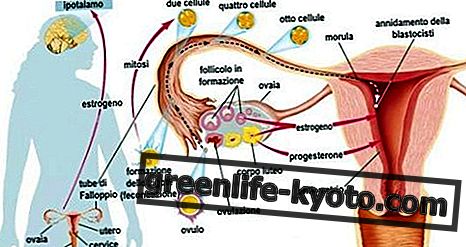
The genus Prunus is undoubtedly one of the most important kinds of fruit plants with regard to human nutrition. Since ancient times plants of this genus have shown themselves to be generous in their productivity, very adaptable to different environments, with very nutritious fruits and with an excellent predisposition to interspecies crossings and genetic improvement.
To this genus belong very common and appreciated species such as peach, cherry, apricot, plum ; but also species considered minor, if only from the point of view of the fruit and vegetable market, such as the myrobalan or amolene, the black cherries, the blackthorn .
In addition to these species, it is possible to come across hybrids of all respect both from the food and organoleptic point of view, and from the historical and cultural point of view, typical plants of some territories and belonging to the right to local traditions which, after being set aside in favor of the great monoculture crops, they slowly come to light thanks to the renewed interest in forgotten and ancient species.
Italian hybrids of the prunacee
In Italy the production of plants of the genus Prunus, mostly native to Asia, found fertile ground, as well as in the French and Balkan areas. Although many varieties of the more common classical species still steal the scene, many interesting hybrids can be found thanks to nurseries, enthusiasts, peasants and local festivals.
The name berincocco or biricoccolo will probably say little to most, while susincocco (sometimes improperly used as a synonym of the first) gives a clearer indication of the type of fruit we are talking about: a cross between plum and apricot .
Berincocco is a natural hybrid that can also be discovered in nature and its fruit truly resembles a cross between plum and apricot ; the hybrid between apricot and myrobalan is sometimes referred to by the same name.
The susincocco instead reproduces only by grafting and after having exposed its beautiful white and red flowers, it delights the palates with a red-fleshed fruit, vaguely reminiscent of the scent of cornea. To these is added the suregio, a long- standing hybrid of cherry and plum, which produces drupes similar to large ovaloid cherries.
Among the forgotten fruits, discover feijoa and amolo
Zaiger hybrids
Headquartered in California, Zaiger's Genetics is one of the most important nurseries in the world for genetic research and crossbreeding of plants of the genus Prunus .
Founded by Chris Zaiger and his wife, it is based on innovative crossover techniques, which have earned him many international awards and thanks to which numerous new fruits have been obtained with unique and very appealing characteristics.
Among the first-generation hybrids we have the "plumcot" and the "apriplums", we encourage in different percentages between apricot and Japanese plum, which have been quite successful in the United States.
Crossing the species further, in the following generations the so-called “ pluot ” were obtained with a thin skin and a juicy, often large pulp: and finally the “ aprium ”, complex hybrids externally much more similar to apricots than to plums, with a toasted meat with a strongly sweet taste due to the high fructose content .
To these fruits are added the “ nectaplum ”, a cross between pescanoce and plum, also sweet and tasty: and the “peacotum”, a hybrid halfway between peach, plum and apricot.
Other hybrids
Traveling in China it is possible to come across black apricot (zi xing), which is actually an ancient stable and very tasty hybrid between apricot and cherry.
Some Californian nurseries have introduced into the local markets the so-called "climax" plum, a not entirely known hybrid that offers particularly large and heart-shaped fruits.
In Canada and in the north of the United States it is possible to find hybrids between the fishing and the Canadian plum, dark and rich in flavonoids.
To conclude, the large family of these plants, hybrid or not, is surely to be known and savored in its many forgotten and extravagant fruits in order not to lose the infinite flavors that are hidden in these various intersections.












